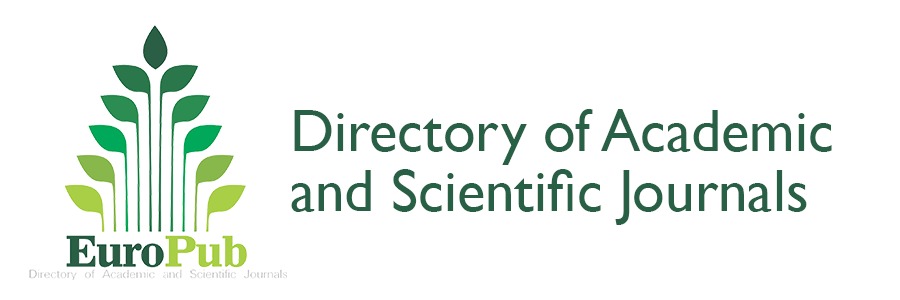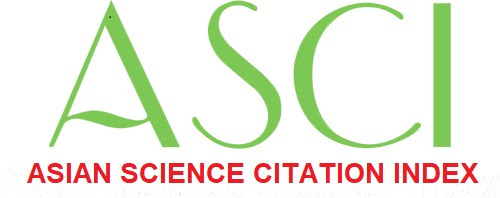Manuscript Submission & Guidelines
- Manuscript Submission
The National Journal of Life and Health Sciences has agreed to accept manuscripts following the "Uniform Requirements for Manuscripts Submitted to Biomedical Journals," as referenced in the New England Journal of Medicine, 1997, 336:309-15. Authors are required to adhere to the "Uniform Requirements for Manuscripts Submitted to Biomedical Journals" and follow the specific author instructions provided below when preparing their manuscripts.
- Manuscript Submission Guidelines
Manuscripts, including tables and figures, must be original and should not be concurrently under consideration for publication by any other third party or journal. Ethical approval from the author's institution's ethical review board is mandatory before submission and must be included with the manuscript. Each manuscript should be accompanied by a cover letter indicating the type of article. The undersigned affirm that the manuscript submitted to the National Journal of Life and Health Sciences is new, original, and has not been submitted to any other journal for publication consideration. For studies involving humans and/or animals, adherence to international standards is required. Additionally, authors must disclose financial associations, conflicts of interest, and other pertinent information. The cover letter must be signed by the corresponding author, with consent and approval obtained from all authors.
Please submit the article through the online submission system or official journal email following the new guidelines set by the Higher Education Commission (HEC) for publication.
- ORIGINAL ARTICLE GUIDELINES
- Manuscript Language and Formatting
The manuscript must be written in the English language and organized in the following sequence: Title Page, Abstract, Keywords, Introduction, Materials and Methods, Results, Discussion, Conclusions and Recommendations, Acknowledgment, Funding Source, Conflict of Interest, and References. Tables and figures should be incorporated within the text where necessary, and pages should be numbered consecutively from the title page to the references. Place the page number in the lower right-hand corner of each page. Utilize Times New Roman font style with a size of 12 throughout the manuscript, except for the title, which should be in a font size of 14 (depending on the word count). Maintain double spacing from the title page to the references and justify all text in the manuscript.
- Title Page:
The title page of the manuscript should adhere to the following guidelines: a concise and informative title (Less than 200 characters), the first, middle, and last names of each author, the complete affiliation of each author, including their designation, department(s), institution(s), province, and country. Additionally, provide the full name, postal address, contact number, and Email of one author who is responsible for correspondence regarding the manuscript.
- Abstracts:
Submit a structured abstract of no more than 250 words. The abstract should comprise five labeled paragraphs, covering Background, Objectives, Methods, Results, and Conclusion. Additionally, include 4-7 keywords.
- Introduction:
Adhere to a funnel-shaped approach, transitioning from a general to a specific focus in the introduction. Begin with a paragraph providing the rationale for the study, followed by a clear statement of the article's purpose. Include updated references and avoid incorporating details on data collection procedures or conclusions from the reported work. It is preferable to manage references through a citation manager such as Medley, EndNote, or any other available tool.
- Materials and Method:
Include all essential components of the materials and methods section for the study. Present information in paragraph form, covering the study design, setting, duration, sampling technique, sample size, population recruitment (including inclusion and exclusion criteria), ethical approval, patient consent, data collection procedure, and data analysis. Ensure clarity and completeness in describing each aspect of the research methodology.
- Ethics:
When conducting a study involving animal or human subjects, adhere to guidelines following the Helsinki Declaration for handling animal or human samples. Ensure patient confidentiality, and avoid using patients' names or contact numbers, especially in illustrative material. For experiments involving animals, comply with national and international laws governing laboratory animals. Clearly state the ethical approval obtained from the national and institutional bioethics committee before initiating the study.
- Statistics:
Provide sufficient information on the statistical processes in your study for data verification. Quantify findings with appropriate indicators of measurement error (e.g., confidence intervals), avoiding sole reliance on statistical hypothesis testing like P-values, as they lack crucial quantitative insights. Discuss experimental subject eligibility, randomization details, and outcomes of observation blinding. Report treatment difficulties and specify the number of observations. In the methods section, offer a broad description of techniques, and when summarizing data in the results section, clearly state the statistical methods used. Limit tables and figures, favoring graphs over tables with multiple entries. Avoid data duplication and use non-technical statistical terminology cautiously. Define statistical terms, acronyms, and symbols for clarity.
- Results:
Organize your findings logically in both the text and table illustrations. Avoid duplicating all data from tables or graphics in the text; instead, emphasize or summarize essential points.
- Discussion:
Focus on the novel and significant aspects of the research. Avoid replicating any specific data or material from the introduction, materials, methods, or findings sections. Explore the implications of the findings and highlight any limitations in the study for future researchers. Connect the results of the report to the most recent available data. Refrain from making unsupported claims or conclusions. Steer clear of discussing economic costs and benefits unless the provided data incorporates an economic analysis.
- Conclusion:
Connect the results of the study to its objectives. Refrain from asserting priority and referencing incomplete work. If applicable, present a new hypothesis. However, if such advice is relevant, ensure it is appropriately labeled.
- Acknowledgments:
Individuals who have made intellectual contributions to the work but do not meet the criteria for authorship may be acknowledged. Their role or contribution should be specified, such as "scientific advisor critical review of study proposal," "data collection," or "participation in a clinical trial." These individuals must have provided their consent to be mentioned. Technical assistance should be acknowledged in a separate paragraph from those recognizing other contributions.
- References:
References should be cited in numerical order (Vancouver Style) upon first mention in the text and identified by a reference number in parentheses. Table and figure references should be numbered in the same order as those in the text. The reference list must be double-spaced and numbered sequentially, following the order in the text. The journal adheres to the Index Medicus format for references, including truncated journal titles as listed in Index Medicus. Avoid using "unpublished observations" and "personal communications" as references; however, written (not verbal) conversations may be mentioned as such in the text. References labeled as "in the press" must have been accepted, not merely prepared or submitted. The author is responsible for ensuring the accuracy of all references and cross-checking them against the original content.
For journal articles, list the first six authors, followed by "et al."
Waqar SN, Hussain H, Khan R, Khawaja A, Majid H, Malik S, et al. Intestinal parasitic infections in children from Northern Pakistan. Infect. Dis J. 2003; 12:73-7.
For books and book chapters, follow the examples below:
DeGroot IJ. Evaluation of thyroid function and thyroid disease. In: DeGroot L, Stanbury J B, eds. The thyroid and its diseases. 4th ed. New York: Wiley, 1975, pp 196-248. Dupont B. Bone marrow transplantation in severe combined immunodeficiency with an unrelated MLC compatible donor. In: White H J Smith R, eds. Proceeding of the third annual meeting of the International Experimental Hematology. Houston: International Society for Experimental Hematology, 1974, pp 44-46.
In Press Leshner AI. Molecular mechanisms of cocaine addiction. N Engl J Med.In press 1996.
Journal article in electronic form
Morse SS. Factors in the emergence of infectious diseases. Emerg Infect Dis [serial online] 1995 Jan-Mar [cited 1996 Jun 5], Computerized Educational Systems, 1993.
Monograph in electronic form
CDI, clinical dermatology illustrated [monographs on CD-ROM] Reeves JRT, Maibach H. CMEA Multimedia Group, producers 2nd ed. Version 2.0. San Diego: CMEA, 1995.
Conference Proceedings
Kimura J, Shibasaki H, editors. Recent advances in clinical neurophysiology. Proceedings of the 10th International Congress of EMG and Clinical Neurophysiology, 1995 Oct 15-19, Kyoto, Japan. Amsterdam: Elsevier, 1996.
Dissertation
Kaplan SJ. Post-hospital home health care the elderly's access and utilization [dissertation]. St. Louis (MO): Washington Univ., 1995.
Volume with supplement
Shen HM, Zhang QF. Risk assessment of nickel carcinogenicity and occupational lung cancer. Environ Health Perspect, 1994;102Suppl 1:275-82.
Abbreviations and Symbols
Except for units of measurement, the Journal discourages the use of acronyms. For further information on correct medical abbreviation, see the CBE Style Manual, Fifth Edition (Bethesda, MD Council of Biology Editions, 1983). When using an abbreviation, the entire term or name of the object to be shortened should come before it.
Drug Names
Generic names should typically be utilized. When proprietary brands are utilized in research, provide the brand name in parenthesis in the methods section.
- Tables
Type each table double-spaced within the text as appropriate. Please refrain from uploading tables as images. Tables should be self-explanatory, complementing the text rather than duplicating it. Each table must be referenced in the text in a sequential numerical order. Number the tables consecutively, using an Arabic number following the term "Table." Titles should be descriptive and concise.
Place explanatory information in footnotes instead of headings. Utilize the following symbols in this order: *, +, ++, #, **. Include a footnote for any non-standard abbreviations used in each table. Identify statistical measures of variance in the footnotes, such as standard deviation and standard error of mean. If data from another published source is employed, obtain formal permission from the original publication and provide full acknowledgment. If data from an unpublished source is utilized, secure permission from the primary investigator and offer full acknowledgment.
- Illustrations
Illustrations should clarify and enhance the message. The use of clear, high-quality graphics is crucial. Figures of low quality will be returned to the author for revision or replacement. All submitted designs become the property of NJLHS and will not be returned unless the publication is rejected.
Illustration legends should be concise and avoid duplicating the text. Legends must be double-spaced on a separate page. Each figure should be referenced in the text in sequential numerical order. Assign a number to each figure following the term "Figure." Use letters to designate sections of drawings (e.g., A, B, C) and adequately explain each part in the caption. Any letter designations or arrows in the artwork must be specified and described.
Original illustrations, not previously published, are preferred for publication in the Journal. However, if images have been published before, writers must obtain explicit permission from the publisher to republish. The source of the original content must be cited in the references, along with the credit line in the legend (Reprinted with permission of Ref. X). All permission releases must be submitted to the Editor when the work is submitted.
- Submission type:
|
Manuscript Type |
Abstracts words |
Other Text words |
Maximum Number of References |
|
Systematic Review article |
250 |
4000 |
100 |
|
Original article |
250 |
3000 |
25 |
|
Short Reports |
- |
1250 |
10 |
|
Case Report |
100 |
1000 |
8 |
|
Editorials |
- |
1000 |
5 |
|
Letters to the Editor |
- |
1000 |
10 |
- Undertaking/ Copyright
All papers must be submitted with an "Undertaking" form signed by all authors in the original. No article will be processed unless the undertaking is submitted alongside the manuscript (Undertaking). The NJLHS allows authors to retain the copyright for their articles without limitations. Authors will, however, grant the publisher the right of first publication, as well as other non-exclusive publishing rights.

























